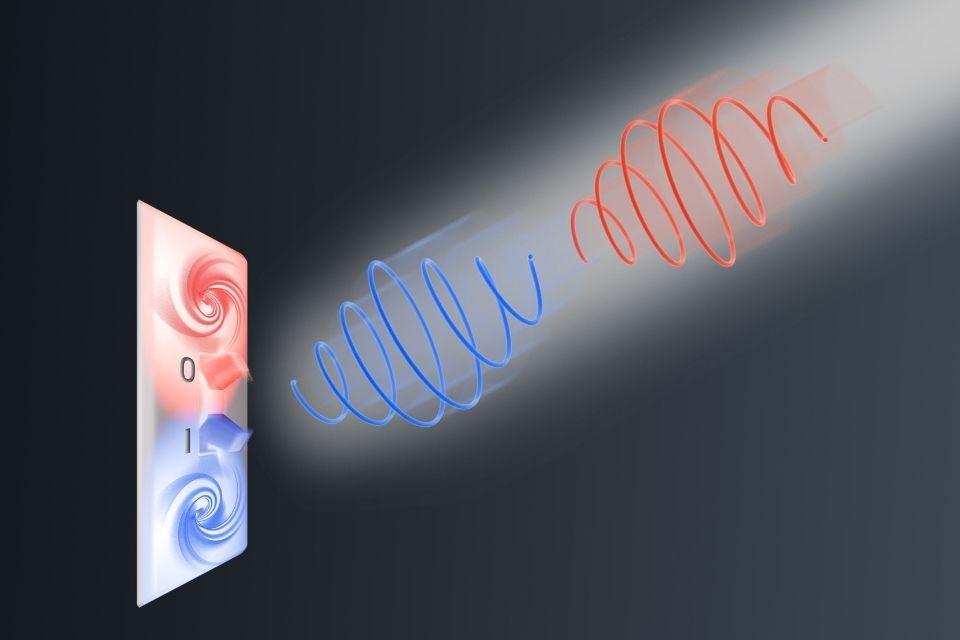Researchers at the Max Planck Institute for the Structure and Dynamics of Matter (MPSD) and the University of Oxford have now shown that bi-stable ferroaxial states can be switched on demand using single ultrashort flashes of circularly polarised terahertz light. This discovery establishes a new mechanism that may lead to light-controlled, ultrafast and stable ferroic switching, and a promising platform for next-generation non-volatile data storage technologies. The findings have been published in Science.
Ferroic materials, like ferromagnets and ferroelectrics, are central building blocks of modern data storage technology. Yet, current platforms face fundamental limits. Ferromagnets – which can be magnetised in opposite directions – suffer from low switching speed, while the ferroelectrics, which can hold opposite electric polarisations, can be unstable because of the depolarising response of the surrounding material. A newly discovered class of materials, which do not suffer from these limitations, are so-called ferroaxials – a term coined in 2011 by Professor Paolo Radaelli from the Department of Physics at the University of Oxford. They are formed by microscopic vortices of electric dipoles that can either be arranged in a clockwise or anticlockwise texture, yet they are extremely difficult to manipulate.
Following a theoretical proposal by Professor Radaelli and Oxford DPhil student Zhiyang Zeng, the research team, led by Professor Andrea Cavalleri from the Department of Physics at the University of Oxford and MPSD, used circularly polarised terahertz light pulses to switch between clockwise and anti-clockwise ferroaxial domains in a material termed rubidium iron dimolybdate (RbFe(MoO4)2.
‘We take advantage of a synthetic effective field that arises when a terahertz pulse drives ions in the crystal lattice in circles,’ says lead author Zhiyang Zeng, a graduate student from the Oxford-Max Planck graduate training programme in quantum materials. ‘This effective field is able to couple to the ferroaxial state, just like a magnetic field would switch a ferromagnet or an electric field would reverse a ferroelectric state.’
‘By adjusting the helicity, or twist, of the circularly polarised light pulses, we can selectively stabilise a clockwise or anti-clockwise rotational arrangement of the electric dipoles,’ continues fellow author Dr Michael Först from the Max Planck Institute for the Structure and Dynamics of Matter, ‘in this way enabling information storage in the two ferroic states. Because ferroaxials are free from depolarising electric or stray magnetic fields, they are extremely promising candidates for stable, non-volatile data storage.’
‘This is an exciting discovery that opens up new possibilities for the development of a robust platform for ultrafast information storage,’ says Professor Andrea Cavalleri, ‘it also shows how circular phonon fields, first achieved in our group in 2017, are emerging as a new re-source for the control of exotic materials phases.’
'This breakthrough comes in the wake of previous experiments in which we demonstrated light control of other ferroic properties such as ferrimagnetism and chirality,’ adds Professor Radaelli, ‘and is a further demonstration of how the application of basic principles of symmetry can lead to entirely new functionalities.’
Photo-induced nonvolatile rewritable ferroaxial switching, Zeng et al, Science, 9 October 2025
A light switch for a hidden order, Perspective, Science, 9 October 2025

